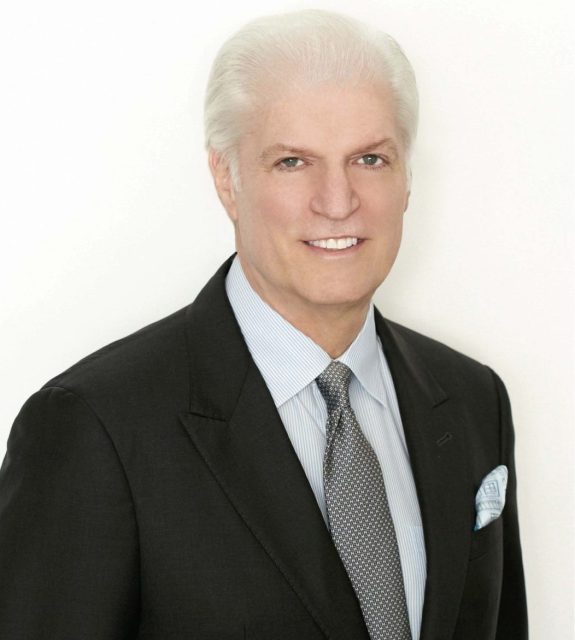Symmastia is a particular interest of mine because I saw a series of them several years ago. I would see women come to me with previous attempts to repair their breasts 3 and 4 times. In trying to figure out why a lot of repairs of symmastia failed repeatedly, we decided to go back to the anatomy lab. I am involved with the University of Texas Medical Branch in Galveston and we went back to UTMB and to LSU Medical School and went to their anatomy labs. With my residents, we did over 200 dissections of the chest wall to look at what was going on with the pectoralis major and the pectoralis minor and how they related to breast augmentation. What we found out was that the pectoralis major, the muscle under which most physicians do breast augmentations, in some people was extremely thin along the sternum. So when doctors made that pocket too far medially and put an implant in there it ripped that muscle lose. We published 4 papers in the most esteemed aesthetic journal in the world, The Aesthetic Surgery Journal, all about the pectoralis major, pectoralis minor, breast augmentation and symmastia. This research has led to a very clear understanding of what is going on and more importantly how to repair them.

Are there warning signs a patient who has had a breast augmentation should look for that may require symmastia surgery?
Symmastia occurs 98% of the time as an acquired event after breast augmentation. It can be congenital, meaning you are born with it, and as the breasts develop the tissue lifts up between the breasts. Most of the time it is after a breast augmentation and it happens almost immediately. Some women after revision breast surgery will have some swelling over their sternum and it goes down. However, women will tell you after a day or two the sternal skin lifts up and it never goes down. If you have some swelling over your sternum, it should be down within a week. If it stays up, you probably have symmastia and it needs to be repaired.
What are some of the causes of Symmastia?
The causes of symmastia are either congenital or acquired. Congenital meaning you are born with it, which of course little girls are not going to know they have symmastia as a young girl. As the breasts develop, if tissue between the breasts also lifts up and there is no discernable definition of the medial aspect of the breasts, then that is congenital symmastia.
The vast majority of symmastia in the United States and around the world is secondary to breast augmentation. Our studies and our research suggests that the majority of those are from breast augmentation that is done under the muscle.
What does a symmastia procedure entail?
Over the years there have been many papers describing symmastia repair. All of these papers had one case or two cases or maybe three cases. We recently published a paper with over 20 cases. I personally feel symmastia repair should be returning the pectoralis major, the muscle of the chest, and the breast tissue back to their original condition. That gives you the best chance of a repair. The repair has to be protected, and by protected we mean keeping the arms in and not stretching the repair. This is important because we actually sew the muscle back to the sternum where they ripped loose and that’s the cause of symmastia. When the muscle detaches, because the implant is under the muscles in most cases, I think the best repair is to go in through a small incision under the breast, usually the old breast augmentation incision, and we repair the muscle back down to the chest and recreate the anatomy the patient was born with. That is your best chance for repair. The older techniques often leave bad scars on the front or are irregular appearing and are not very satisfactory.
What can the patient expect from a consultation, pre and post-op of this procedure?
Many of my symmastia patients that come in for consultation are nothing more than a breast augmentation consultation. By that I mean, we take your history, I listen to you, I hear about the course of events that happened with your previous surgery, some of these women have had several attempts at repairs that often break down. I see many patients from out of town and we interview them by Skype. For that I am going to need to see your breasts as well by Skype. Of course, I have my nurse with me and we are going to examine you. When they come in town for the repair, I see them the day before surgery and examine them and take their history again.
Postoperatively my patients are managed very carefully because I am repairing the pectoralis major muscle, which goes from the sternum over to the arm. We must keep the arm in and we can’t externally rotate it. Our patients are told they want to act like T-Rex with little tiny arms, all in and attached so that they are not pulled out and challenging that repair. In addition, we have our patients in a special bra, called a thong bra, that puts a little bit of pressure on the sternum and holds everything in place with a regular sports bra over it. Those can be taken off to bath and wash. I want the arms in and wearing those special bras for 6 to 8 weeks before we gradually start having motion. This is almost like an orthopedic repair where we are protecting this muscle repair to the chest wall before you can start to slowly move your arms again. I repair symmastia and I put implants back in immediately, but I put them over the muscle. The reason we starting putting implants under the muscle years ago was because saline implants weren’t very attractive over the muscle. Now we are using ‘gummy bear’ or cohesive gel implants and they usually look fine over the muscle. If they are going to be a bit visible we can always come back and camouflage them with fat grafting at a later procedure.
What is the recovery time?
Recovery time from symmastia repair is much like a mastopexy or other types of breast surgery. No heavy lifting for at least 6 weeks. The way I do symmastia repair, we are reattaching muscle to the sternum so it must be protected carefully for 6 to 8 weeks before any heavy lifting or physical activity is done. We really want to restrict it. In regular breast augmentation or mastopexy we let patients start mild cardio at 2 weeks and resistance at 6 weeks. We let our patients start mild range of motion at 6 weeks and heavy resistance around 12 weeks.























